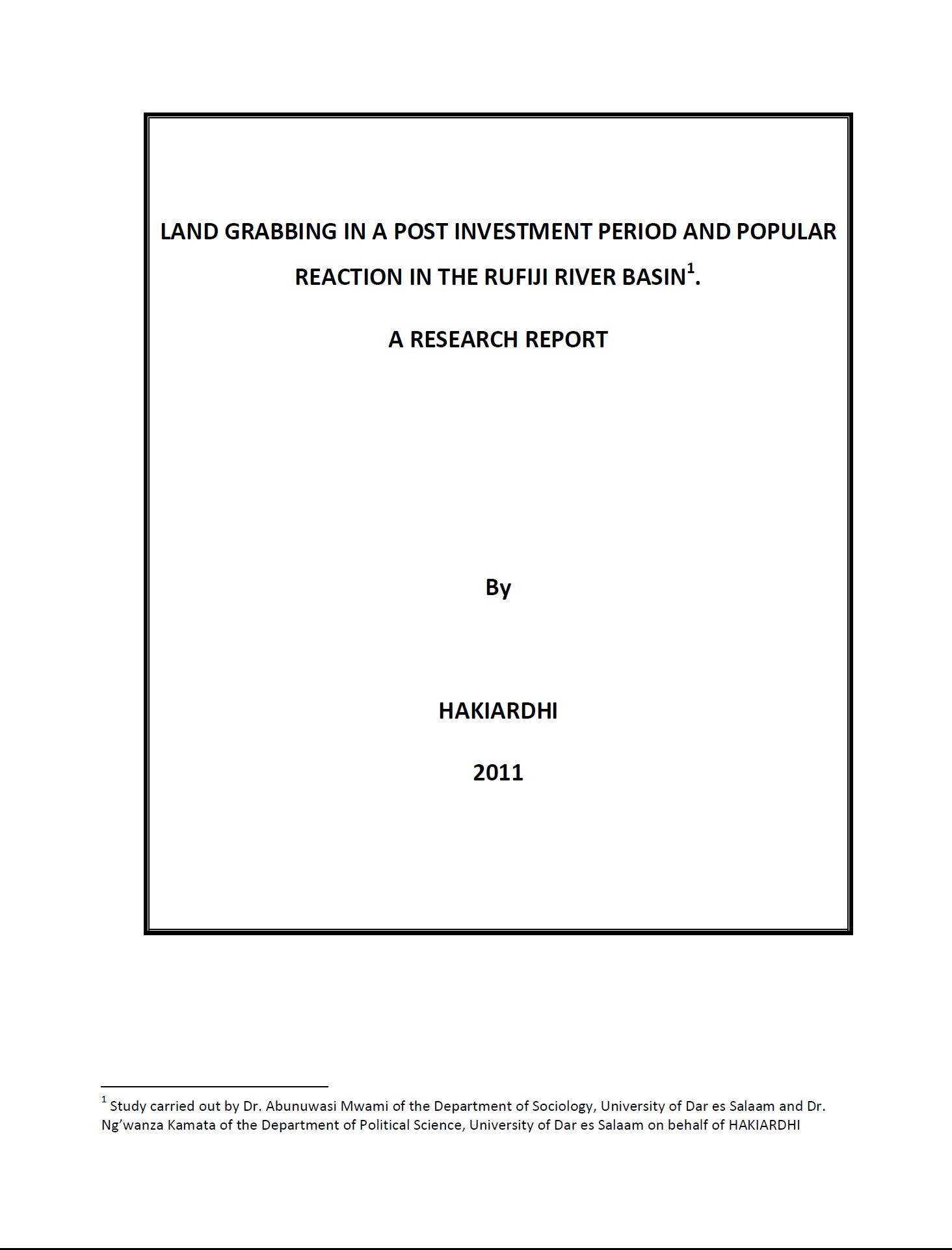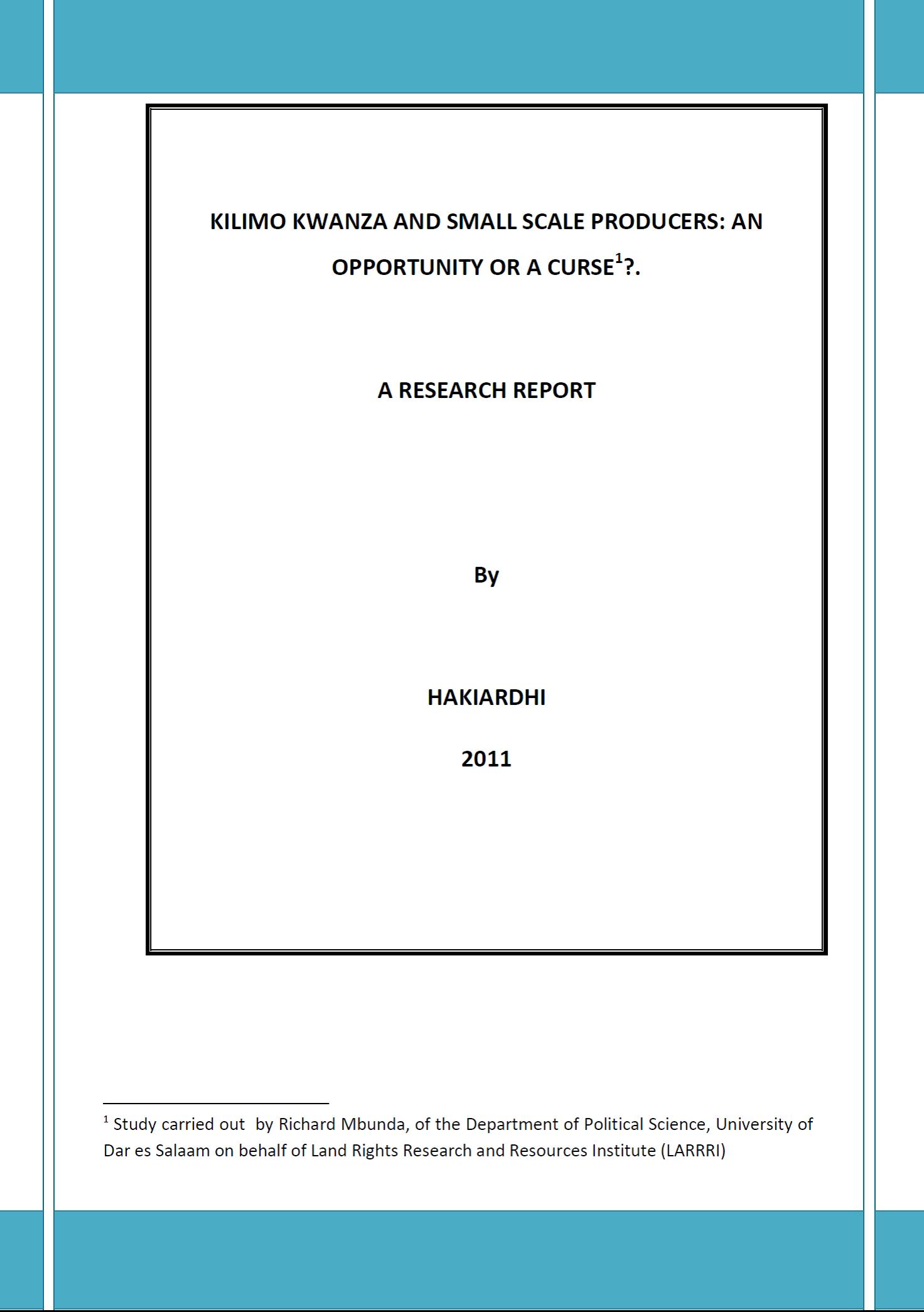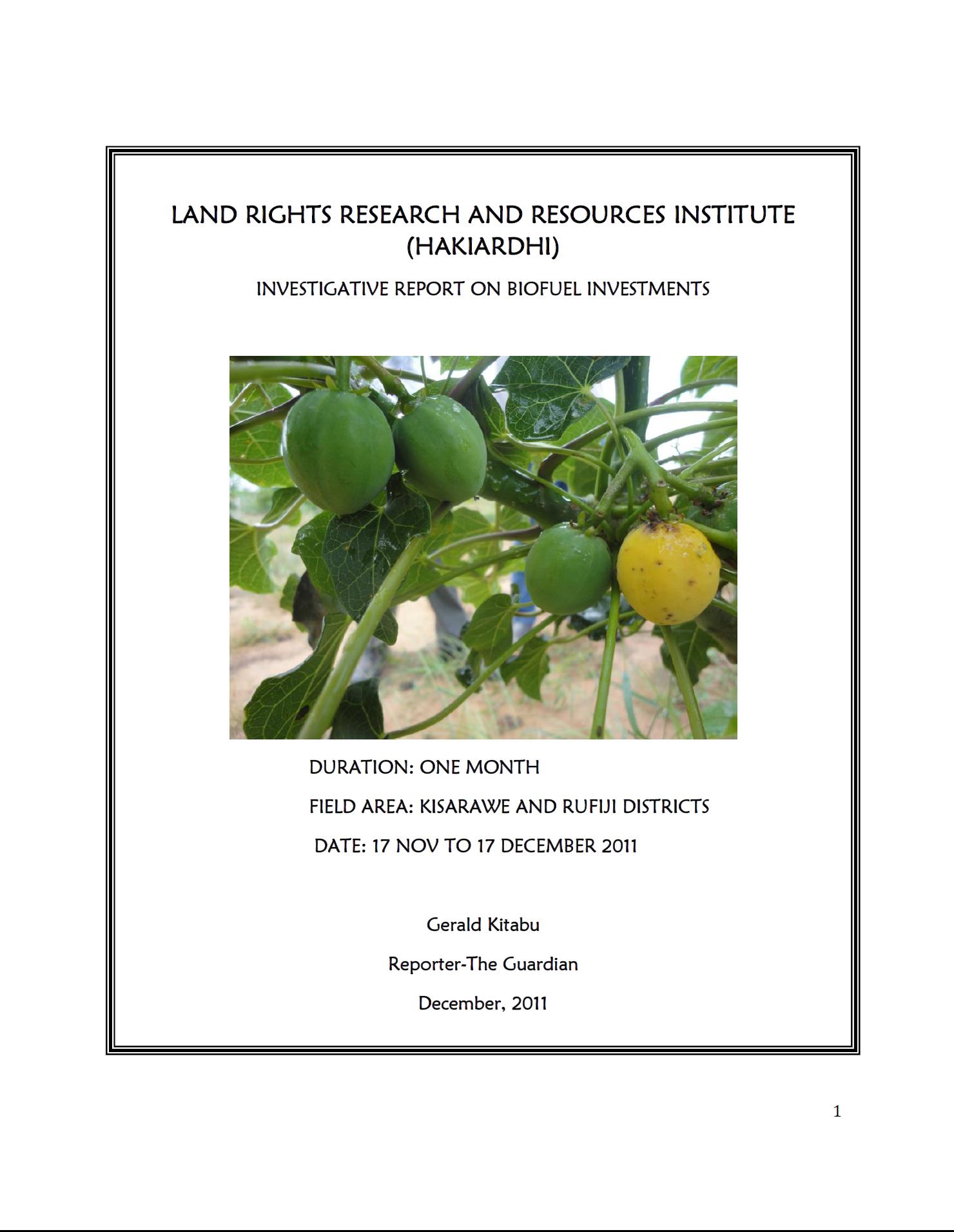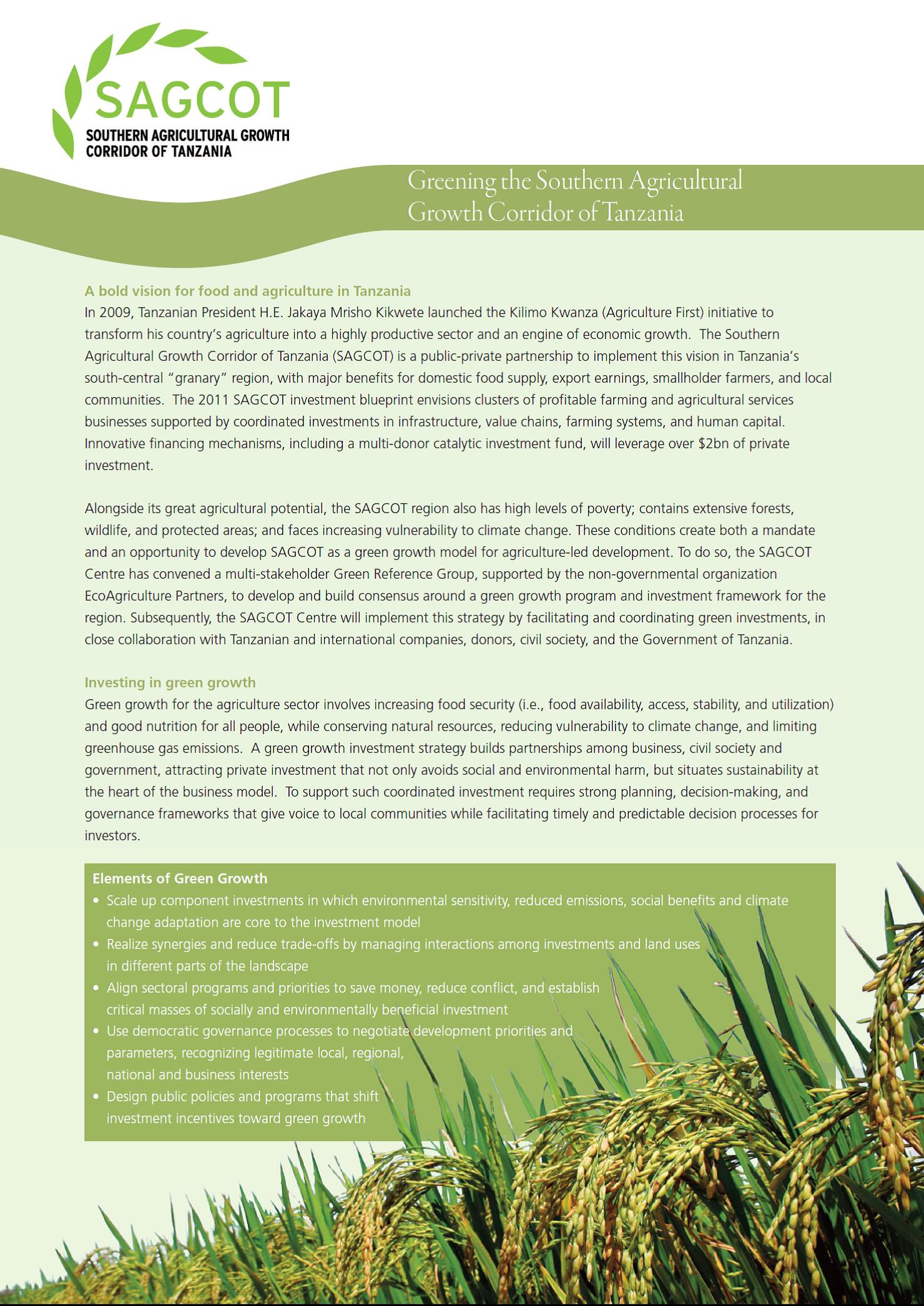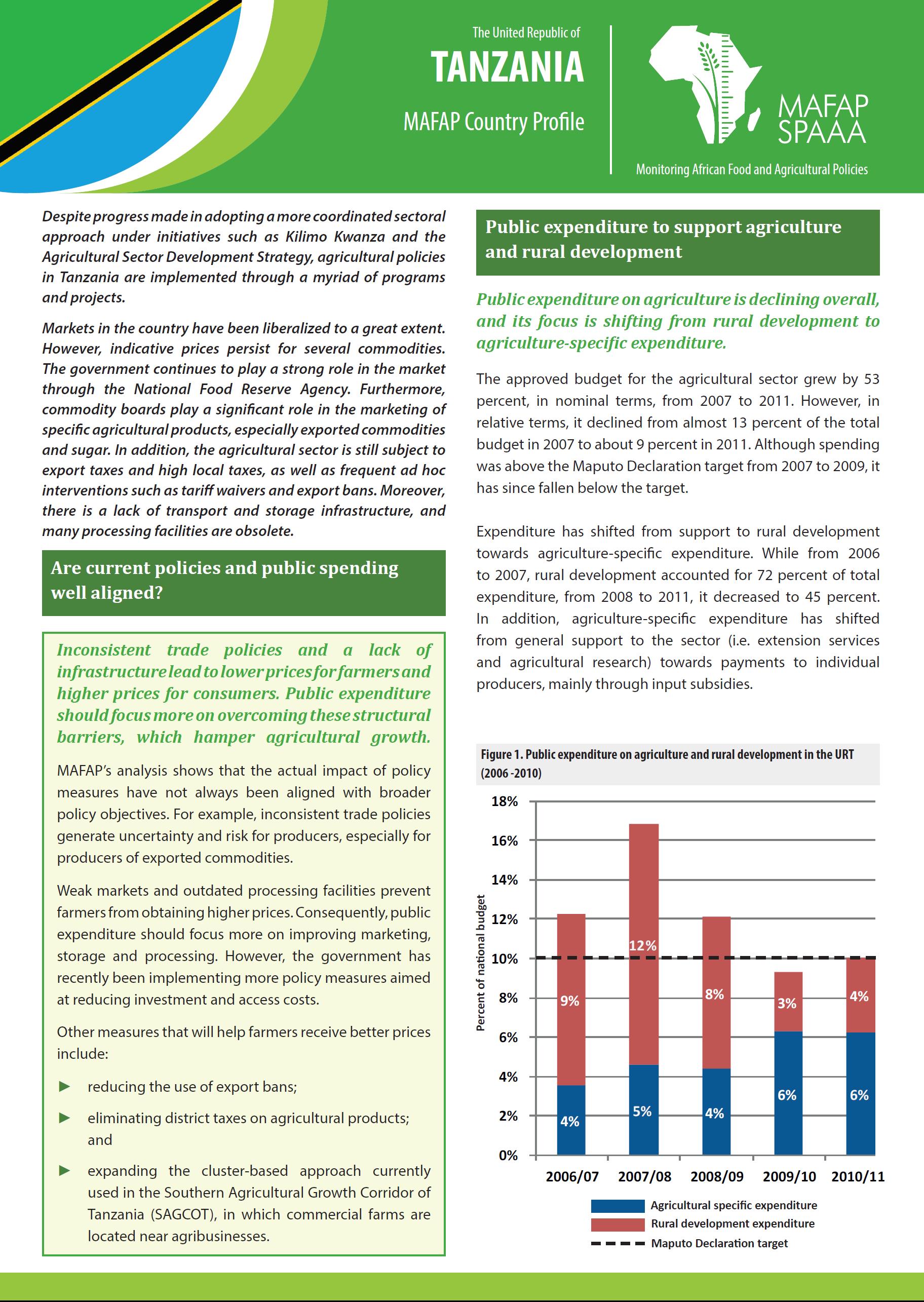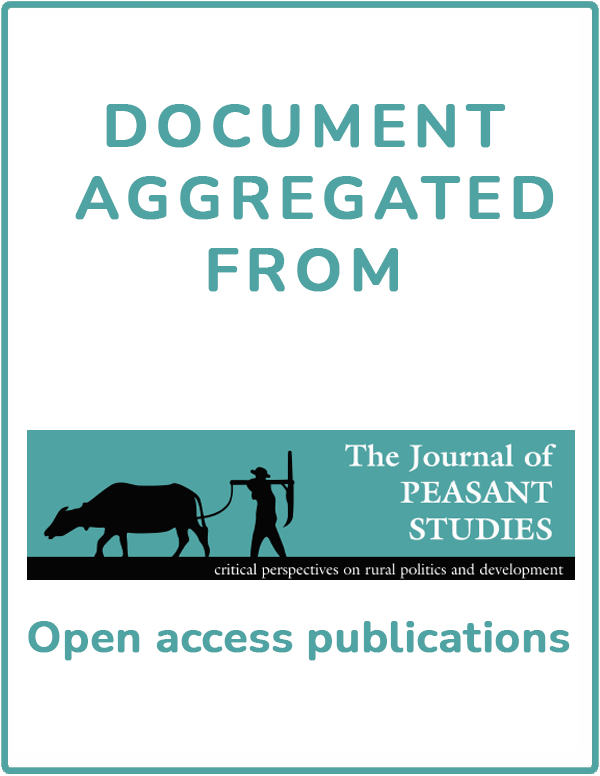Land Grabbing in a Post Investment Period and Popular Reaction in the Rufiji River Basin
What has been the reaction of the rural producers and other land holders over these demands and actual land acquisitions? What does their reactions means in relation to ongoing land grabbing? While these questions are important this study was motivated by two major concerns.
Kilimo Kwanza and Small-Scale Producers: An Opportunity or a Curse?
This study sought to follow up the implementation of the Kilimo Kwanza initiative with the view to establish reliable facts on its significance to small-scale producers, mainly peasants and pastoralists. To achieve this, the study began by examining the perception of small-scale producers about Kilimo Kwanza and it assessed their participation in the implementation process. Moreover, the study scrutinized the proposed amendment of the Village Land Act and its implication to small-scale produces if carried out.
Investigative Report on Biofuel Investments
Increasing investments in biofuel production follow a shift of energy demand,in developed nations from fossil fuel to bio energyto run machines. Consequently, there has is an accelerated influx of investors from the Europe, Asia and Americain quest for productive and fertile lands.
Proponents of the biofuel investments say the investment will improve among other things, agricultural production, add value to local products and markets and improve social services such as roads infrastructure, health facilities, clean water supply and education.
Public Interventions in Agriculture: with What Gender Implications
The Study on Public Interventions in Agriculture: With What Gender Implications was conducted by ANSAF with the purpose to generate relevant data that shall facilitate better understanding on to what extent interventions in Agriculture considered the gender aspect to ensure equal participation of women, men, youth and other marginalized groups in the process.
Greening the Southern Agricultural Growth Corridor of Tanzania
The brief about the work and principles of operation of partners within the SAGCOT region.
Monitoring African Food and Agricultural Policies
Despite progress made in adopting a more coordinated sectoral approach under initiatives such as Kilimo Kwanza and the Agricultural Sector Development Strategy, agricultural policies in Tanzania are implemented through a myriad of programs and projects.
Atlas de la tenencia de la tierra en el Ecuador
El "Atlas sobre la tenencia de la tierra en el Ecuador" constituye una colección de mapas que dan cuenta de la tenencia de la tierra en Ecuador: quiénes tienen acceso a la tierra, en qué magnitud, cuáles son los tipos de cultivo y en qué cantones y provincias se encuentran.
Debido al tamaño del archivo, visite este link para poder descargarlo.
Budget Analysis for ASDP and DADP Funds in Tanzania
The Agriculture Sector Development Programme (ASDP) is a Sector Programme largely implemented at the district level through the District Agricultural Development Plans (DADPs) as an integral part of the District Development Plan (DDP). The government also works at the national level through the Agriculture Sector Lead Ministries (ASLMs) to deal with issues such as fertiliser subsidies, large irrigation schemes, research and development, regulation and coordination as well as quality assurance.
Three decades of agrarian reform in Zimbabwe
This article examines the empirical facts about the actual outcome of Zimbabwe's land reform, based on years of field research. It shows that the popular assumption about failed land reform in Zimbabwe is wrong on several counts: the character of Zimbabwe's land reform has been redistributive, and the extent of this has been wide enough to trigger significant progressive changes in the agrarian structure. This is despite some elites having benefited from the process and foreign-owned agro-industrial estates and conservancies being retained.
Plano Estratégico para o Desenvolvimento do Sector Agrário (PEDSA 2011-2020)
O Desenvolvimento Agrário tem sido desde sempre uma prioridade para Moçambique. Em 1998, o Governo em colaboração com os principais parceiros desenhou o Programa de Desenvolvimento da Agricultura (PROAGRI I) com o objectivo de melhorar a coordenação das intervenções públicas na agricultura e orientar os investimentos..


